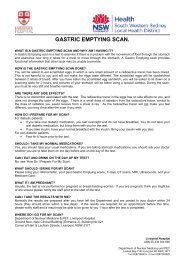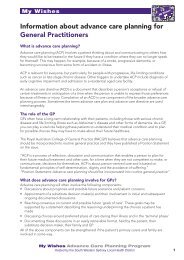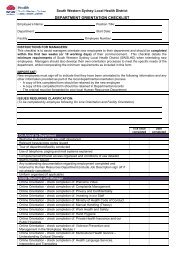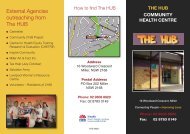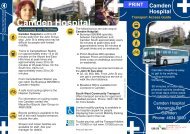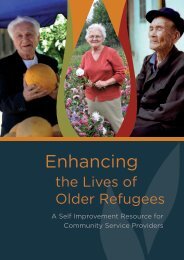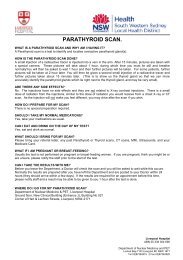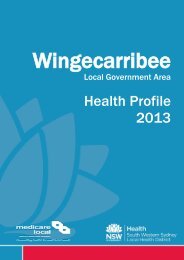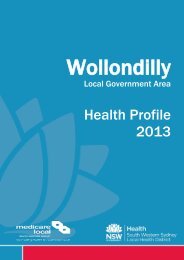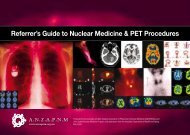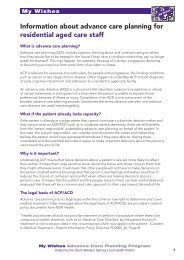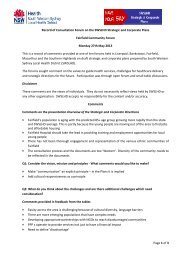Issues Paper - South Western Sydney Local Health District - NSW ...
Issues Paper - South Western Sydney Local Health District - NSW ...
Issues Paper - South Western Sydney Local Health District - NSW ...
Create successful ePaper yourself
Turn your PDF publications into a flip-book with our unique Google optimized e-Paper software.
A Research Strategy for <strong>South</strong> <strong>Western</strong> <strong>Sydney</strong> <strong>Local</strong> <strong>Health</strong> <strong>District</strong> – <strong>Paper</strong> No.1 <strong>Issues</strong> Final April 2012The <strong>South</strong> West Growth Centre (SWGC) covering Liverpool, Camden and CampbelltownLGAs is a major <strong>NSW</strong> urban development with a projected population of 300,000 people by2025. In collaboration with the local Divisions of General Practice, a model for future healthservice provision has been identified. The model proposes Team General Practices andPrimary <strong>Health</strong> Care Clinics servicing smaller populations, and Integrated Primary <strong>Health</strong> andCommunity Care Centres (with potential to offer a wider range of ambulatory care services)serving very large populations. This model will drive new approaches to primary health andcommunity based care and infrastructure developments in the SWGC.As a collaboration between SWSLHD, the SWSML and universities, this is an important area forresearch into developing research culture and ethos, and for evaluating alternative ways ofproviding, managing, operating and integrating primary and community care.The new Ingham Institute building will provide a central focus for health research in <strong>Sydney</strong>’s<strong>South</strong> West. Liverpool Hospital has two other developments of importance. The ResearchRadiation Oncology Bunker will enable clinical researchers to vastly improve patienttreatment in cancer patients treated for tumours and will place Liverpool at the centre ofworld’s best practice for radiation treatment across many different cancer types. The ClinicalSkills and Simulation Centre will support the practical interaction between desk andlaboratory, clinical practice, and public health policy by providing state of the art trainingand facilities for clinicians, nurses, allied health professionals and students.Summary of issuesAustralian and <strong>NSW</strong> government initiatives such as Medicare <strong>Local</strong>s, urbandevelopment in the <strong>South</strong> West Growth Centre, redevelopment of CampbelltownHospital and development of the Ingham Institute offer unique opportunities for newpartnerships and areas of research.Building Research Capability1. Management of ResearchThe SWSLHD workforce is hardworking and committed to the community in which they serve.The lack of dedicated time for research (and workload pressures created by populationgrowth, growing service demand and insufficient resources) and other supports (e.g. clericalstaff) were identified by senior researchers and staff as the most significant barrier forresearch. Many reported that research occurred outside normal working hours and/orprevented participation in research. These same pressures also create a culture whereresearch was not supported by managers or by other staff.Not all staff will have the skills, interest in or desire to lead health research however it isbroadly recognised that health services and staff should contribute to research to improvehealth and health care. Towards this end, there was considerable support for incorporatingresearch into the roles of staff and implementing polices which ensuring that dedicated timewas allocated for research.Summary of issuesThe lack of dedicated time for research and workload pressuresThe lack of research supports such as data management, IT and statisticsSWSLHD| 13



